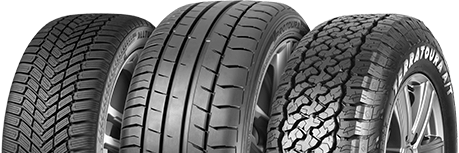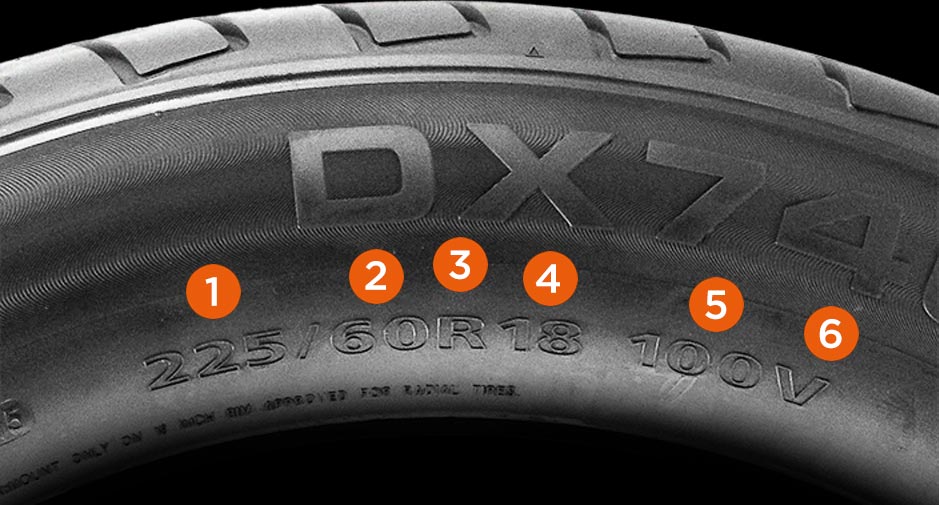
What does load and speed rating mean on my tyres?
Friday 12th April 2024If you’re doing a periodic review to check if your tyres are fit for purpose and safe, you may be looking at your current tyres’ load and speed rating.
There are a few dos and don’ts to ensure your tyres are running safely, so to make this process simple to follow, let’s break it down…
First things first, what is a load and speed rating?
The tyre load rating corresponds to a maximum load (in kg) that can be carried by a single tyre.
While the tyre speed rating indicates the maximum speed at which a tyre can carry its maximum load.
Why is it important to check the load and speed rating?
As part of tyre maintenance, it is important to ensure you are not overloading your vehicle and its tyres. Overloading the tyres can cause damage and mean they wear out more quickly. In extreme conditions where a tyre is consistently overloaded, there may be a tyre blow out which can be dangerous when on the road.
Meanwhile, as the speed rating states the maximum speed at which a tyre can carry its maximum load, if your driving behaviour sees you consistently running a tyre at speeds higher than its rating, you can also shorten a tyre lifespan.
| Rating | Speed (km/h) | Speed (mph) |
| B | 50 | 31 |
| C | 60 | 37 |
| D | 65 | 40 |
| E | 70 | 43 |
| F | 80 | 50 |
| G | 90 | 56 |
| J | 100 | 62 |
| K | 110 | 68 |
| L | 120 | 75 |
| M | 130 | 81 |
| N | 140 | 87 |
| P | 150 | 93 |
| Q | 160 | 99 |
| R | 170 | 106 |
| S | 180 | 112 |
| T | 190 | 118 |
| U | 200 | 124 |
| H | 210 | 130 |
| V | 240 | 149 |
| W | 270 | 168 |
| Y | 300 | 186 |
| ZR | >240 | >150 |
It’s important to add, the speed rating should never be taken as the safe maximum speed of your vehicle or as a recommendation that you should travel faster than the legal speed limit. The actual safe driving speed depends on many other factors, such as laws, weather and road conditions, and your vehicle’s mechanical capabilities and condition.
How do I identify/find my tyre ratings?
The load index and speed index appear together at the end of the tyre size code found on your tyres side wall. The easiest way to tell the difference between the two is that the load index is a two- or three-digit number, while the speed index is a single letter. (see annotated image label ‘A’)

The load rating and corresponding maximum tyre loads are listed in a standard table, often found in your vehicle handbook.
Similarly, to find out what speed rating the alphabetical symbol corresponds to, check the standard table often found in your vehicle handbook.
You can also understand the construction of a tyre and what it should be used for by referring to the labelling on the tyre sidewall (see annotated image label ‘B’), including:
- P: Passenger car
- LT: Light truck
- C: Van commercial tyre
- XL, HL or reinforced: Tyres with a higher load capacity than normal for their dimension. Such tyres need to be replaced by the equivalent (example: a HL tyre by another HL tyre)
- T: Temporary (spare wheels)
It’s also important to note the speed rating is based on the weight of the individual tyre.
And what about dual ratings?
The load index on light truck tyres is different from that of passenger cars: it usually has two ratings separated by a slash. This is because most light truck tyres are designed to be used in a dual back wheel system with two tyres side by side.
The first number is the load rating when the tyre is used alone and the second is the rating when it is used as a dual tyre. The dual rating is usually lower to cover situations where one tyre in the pair fails and the other has to carry the full load.
How do I choose the right tyre for my vehicle?

If you plan to buy replacement tyres in a size other than that recommended by the manufacturer, you should consult the car tyre load capacity index provided in the car’s manual. There you will find the guidelines recommended by the manufacturer.
However, those with vans, converted vehicles or frequently carrying a heavy load may require tyres which sit outside the standard specification of the vehicle. For any driver in this situation, we’d recommend the vehicle is assessed by an expert to ensure the right tyres are fitted.
What happens if an incorrect tyre load or speed is fitted?
If you use tyres with the wrong speed rating, it is against the law and could contribute to dangerous driving as steering response and handling will be affected. Installing the wrong type of tyres on your car can also void the manufacturer’s guarantee, so be sure to check in your user manual.
To learn more about tyre maintenance, visit our guide on and find out further steps you can take to make sure you are safe on the road at our tyre safety page.









